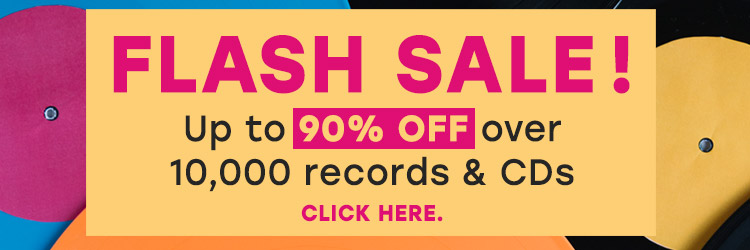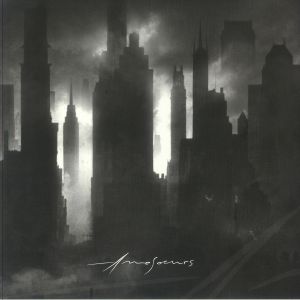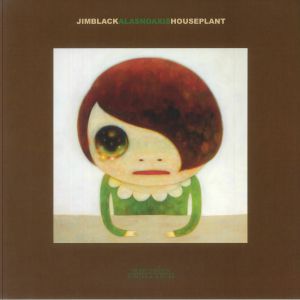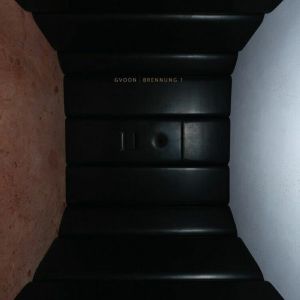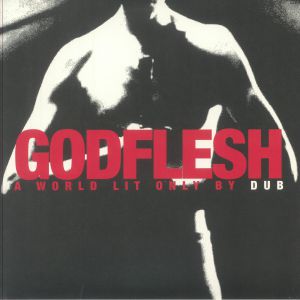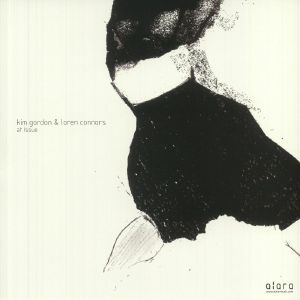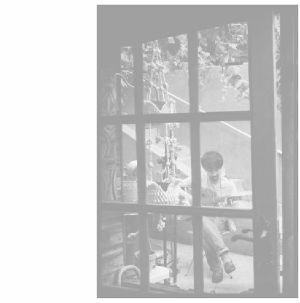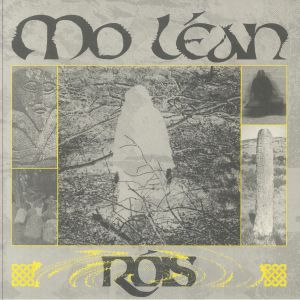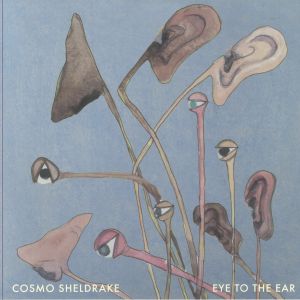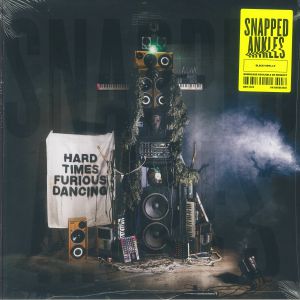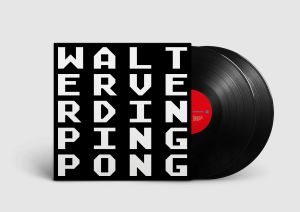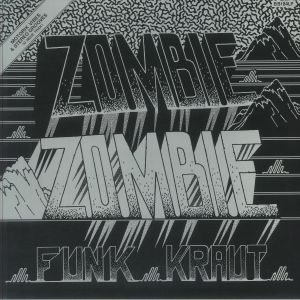Filter
Type
Label
Release Title
Price
Back in stock: Post Rock/Experimental
Post Rock/Experimental vinyl represses and restocks
Artikel 1 bis 18 von 18 auf Seite 1 von 1 anzeigen
in stock $35.63
Starring Rosi (50th Anniversary Edition) (180 gram vinyl LP)
Cat: MGART 615. Rel: 04 Mar 25
Review: Ash Ra Tempel's fifth and - in most ways of judging it - final album was really also a swan song for the late, great Manuel Gottsching. Recoded at Studio Dierks, in the small, picturesque and windmill-happy German village of Stommeln by none other than Scorpions studio chief Dieter Dierks, there's a lot happening on Starring Rosi. And all of it really pretty damn good. It's funk, it's epic. It's moody, it's upbeat. It's steeped in an air of Krautrock and space rock, yet also wouldn't sound out of place providing the slap bass and guitar licks for a 1970s movie trailer. Simply put, it's Ash Ra Tempel, from the cosmic warmup and gradual build go 'Laughter Loving', through the folk-ish serenity of 'The Fairy Dance' and warbling, warped cacophonies on 'Schizo'.
… Read more in stock $31.76
Houseplant (reissue) (LP)
Cat: 917154 1. Rel: 04 Mar 25
Review: Jim Black's Houseplant sees the progressive-jazz drummer continue to refine his signature style, a fusion of jazz and rock that's as quirky as it is inventive. While not a radical shift from his previous works, this 2009 release showcases Black's distinctive approach to drumming, blending complex rhythms with sly, punchy backbeats that keep the session lively. Backed by his longtime band Alas No Axis, Black delivers a sprightly set with guitarist Hilmar Jensson, whose polytonal riffs add texture, and saxophonist Chris Speed, who brings a smoother edge to the more intense moments. Tracks like 'Malomice' highlight the band's ability to shift seamlessly between acid-rock and jazz, with Speed's saxophone weaving off-kilter melodies over Black's precise, crashing grooves. The mood softens on introspective cuts like 'Elight,' where the musicians ease into more delicate, atmospheric territory. Bassist Skuli Sverrisson provides the glue, his limber playing driving the energy throughout. Houseplant is a masterclass in balancing catchy riffs with jazz improvisation, offering an intense but melodic exploration of jazz-rock fusion.
… Read more in stock $25.95
Review: After a period of roughly three decades, German soundtrack artist and onetime Karlheinz Stockhausen apprentice Holger Czukay shares a surprise trove of lost tapes, which are said to have been once recorded by the artist for "free disposal" and which were presumably forgotten about at the time. Now available, all of said material is said to date back to at least the 1990s, and marks the forward thinking and "ahead of its time" (as remarked by fellow producer Schneider TM) approach to cold Kraut and experimental wave that informed Czukay as he experimented freewheelingly with beatmaking while in the company of further fellows Dr. Walker and Air Liquide. Also evolving in temporal conjunction with an experimental live show involving body tracking tech, fashioned by mixed media artist Arthur Schmidt, there are implicit themes of virtual reality and haptic sound control here. Way ahead of its time indeed.
… Read more in stock $33.69
A World Lit Only By Dub (12" + insert)
Cat: FLESHREC 001. Rel: 21 Mar 25
in stock $39.75
At Issue (B-STOCK) (limited LP + insert)
Cat: ALA 2101LP (B-STOCK). Rel: 01 Jan 90
B-STOCK: Sleeve damaged but otherwise in excellent condition
Review: ***B-STOCK: Sleeve damaged but otherwise in excellent condition***
Not just a clever name, At Issue takes its title from the Brooklyn venue this incredible album was recorded in, namely Issue Project Room. For those who don't recognise the musicians involved, Kim Gordon is an icon of discordant, white noise-y rock 'n' roll, best known as a member of Sonic Youth - one of the most iconic guitar acts to emerge in the 1980s.
That might be a red herring in this context, though, because at the New York address in question Gordon was joined by legendary blues minimalist maestro, Loren Connors. The result is a hybrid work that's patient, sophisticated, utterly mesmerising and - for want of a better, less fawning word - close to perfection. Profoundly moving, and masterfully arranged, we guarantee this is one for the lifetime honours list.
… Read moreNot just a clever name, At Issue takes its title from the Brooklyn venue this incredible album was recorded in, namely Issue Project Room. For those who don't recognise the musicians involved, Kim Gordon is an icon of discordant, white noise-y rock 'n' roll, best known as a member of Sonic Youth - one of the most iconic guitar acts to emerge in the 1980s.
That might be a red herring in this context, though, because at the New York address in question Gordon was joined by legendary blues minimalist maestro, Loren Connors. The result is a hybrid work that's patient, sophisticated, utterly mesmerising and - for want of a better, less fawning word - close to perfection. Profoundly moving, and masterfully arranged, we guarantee this is one for the lifetime honours list.
in stock $20.44
Stromung (180 gram vinyl LP + MP3 download code)
Cat: ST 2501. Rel: 13 Mar 25
in stock $28.71
No Floor (LP + MP3 download code)
Cat: THRILL 625LP. Rel: 20 Mar 25
Review: Homaging mutuality in a robust creative dialogue, More Eaze and Claire Rousay add another flash of brilliance to a mesmerising string of allegorical LPs. Both born in San Antonio, Texas, Rousay and Eaze (Mari Maurice) riff (literally) on strummed country and noise rock echoes, reflecting an uptick in electronica artists sound-repainting the lonesome grasslands and desert great plains of the mid Southern United States. Yet on No Floor, there is an ardent sci-fi leitmotif too, producing a techno-realist vision reminiscent of a Texan Death Stranding and/or Simon Stalenhag painting. From 'kinda tropical' to 'limelight, actually' we hear shortgrass droughts, short-wave police radio chatter, and the bootup zaps of a beaten up pocket survivo-droid, as it scans the semidesert we alone must brave.
… Read more in stock $33.42
The Near End The Dark Night The County Line (silver vinyl LP + insert)
Cat: DRFT 15. Rel: 31 Mar 25
in stock $34.79
Ghost/Spirit (translucent red vinyl LP + MP3 download code (indie exclusive))
Cat: THRILL 618LPX. Rel: 20 Feb 25
in stock $35.89
in stock $25.95
Quique (reissue) (B-STOCK) (2xLP)
Cat: PURE 374LP (B-STOCK). Rel: 01 Jan 90
B-STOCK: Sleeve damaged but otherwise in excellent condition
Review: ***B-STOCK: Sleeve damaged but otherwise in excellent condition***
Bridging the gap between guitar-driven rock and ambient techno - they would later become the first artist to bring guitars to Warp Records - Seefeel skillfully blended electronic loops with post-psychedelic basslines, mermaid-like vocals from Sarah Peacock and intelligent percussion. Their debut album for Too Pure in 1993 was both ahead of its time and timeless, offering a quiet revolution of repetition and downtempo somnolent soundscape, a record that remains beautifully undated. Tracks like 'Imperial'. 'Industrious' and 'Charlotte's Mouth' demonstrate Seefeel's knack for using guitars as electronic complements, layering hypnotic smears of feedback with Peacock's intimate whispers. The eight-minute opener, 'Climatic Phase No. 3', floats with barely-there percussion and a lazy, dreamy melody, while 'Filter Dub' delivers a sublime, drowsy bass line perfect for slipping into sleep. The album's structure leans into drone and quirky ambience, creating an experience more akin to a dream state than a traditional rock record. Quique feels proto-IDM, a precursor to the ambient-motorik noise-pop aesthetic that artists like Tim Hecker and Mouse on Mars would explore. Seefeel's early work remains a blueprint for electronic experimentation, demonstrating that the band's forward-thinking approach helped define a genre that continues to defy easy categorisation. Quique is not just a product of the 90s - it's a sonic vision that still feels fresh and boundary-pushing today.
… Read moreBridging the gap between guitar-driven rock and ambient techno - they would later become the first artist to bring guitars to Warp Records - Seefeel skillfully blended electronic loops with post-psychedelic basslines, mermaid-like vocals from Sarah Peacock and intelligent percussion. Their debut album for Too Pure in 1993 was both ahead of its time and timeless, offering a quiet revolution of repetition and downtempo somnolent soundscape, a record that remains beautifully undated. Tracks like 'Imperial'. 'Industrious' and 'Charlotte's Mouth' demonstrate Seefeel's knack for using guitars as electronic complements, layering hypnotic smears of feedback with Peacock's intimate whispers. The eight-minute opener, 'Climatic Phase No. 3', floats with barely-there percussion and a lazy, dreamy melody, while 'Filter Dub' delivers a sublime, drowsy bass line perfect for slipping into sleep. The album's structure leans into drone and quirky ambience, creating an experience more akin to a dream state than a traditional rock record. Quique feels proto-IDM, a precursor to the ambient-motorik noise-pop aesthetic that artists like Tim Hecker and Mouse on Mars would explore. Seefeel's early work remains a blueprint for electronic experimentation, demonstrating that the band's forward-thinking approach helped define a genre that continues to defy easy categorisation. Quique is not just a product of the 90s - it's a sonic vision that still feels fresh and boundary-pushing today.
out of stock $28.17
Eye To The Ear (gatefold 2xLP + MP3 download code)
Cat: TAR 30. Rel: 25 Jul 24
Review: Cosmo Sheldrake's Eye to the Ear is a challenging album to categorise, with the versatile talents of this English singer, producer, composer, songwriter, and multi-instrumentalist turning to a range of styles, from classical choral works ('The Feet are the Link') to electronic compositions created from birdsong, exemplified by 'Shiny Is the View.' It even ventures into the utterly unique with 'The Snapping of Shrimp,' a track incorporating the sounds of a regenerating coral reef. This is Sheldrake's second full-length album, arriving six years after The Much Much How How and I. Both albums explore themes of symbiosis and environmentalism, prominently featuring horn ensembles. However, Eye to the Ear leans more towards slow, contemplative tracks and a diverse soundscape. 'Breathe Round Corners' stands out as a particularly poignant song about environmental degradation, accompanied by the calls of endangered birds. The most riveting aspect of Sheldrake's music is his use of unusual samples, such as sounds from Sri Lankan frogs, a humpback whale, snapping shrimp, blacksmiths, and even 15 golf balls bouncing on a wooden floor. His environmental themes are influenced by scientific expeditions with his biologist brother, Merlin, to remote locations. The track 'Lichens' includes samples from a site in Ecuador where a new species of psychedelic mushroom was discovered. Standout tracks include 'Does the Swallow Dream of Flying,' 'Marvelous Clouds,' and 'Breathe Round Corners.' Eye to the Ear is an ideal listen for those seeking music beyond the typical human-centric narrative.
… Read more in stock $30.10
Agaetis Byrjun (reissue) (gatefold 180 gram 'meet me in the bathroom tile' deep blue vinyl 2xLP + booklet + insert with obi-strip)
Cat: VMP 2358LP. Rel: 27 Mar 25
Review: Considered groundbreaking at the moment of its release, Sigur Ros' Agaetis byrjun, originally released in 1999, is a subtle and speechless blend of post-rock, ambient, and ether-electronica. The album propelled the Icelandic band to fame for its lush falsettos from Jonsi - which indulged a Cocteau Twins-esque conlang mixed with Icelandic, known among the band members as "Hopelandic." Tracks like 'Svefn-g-englar' and 'Staralfur' became instant classics, with a wide-berthed, cinematic feel, regaling the sense of standing at the edge of an ultimatum. The 2024 Vinyl Me, Please reissue now comes repackaged, offering it in a deluxe vinyl edition with remastered sound.
… Read more in stock $45.84
in stock $22.08
in stock $31.48
Kachakacha (green & pink merge vinyl LP + insert + MP3 download code)
Cat: DAMNABLY 155. Rel: 20 Mar 25
in stock $20.16
in stock $24.85
Artikel 1 bis 18 von 18 auf Seite 1 von 1 anzeigen

 USD
USD




